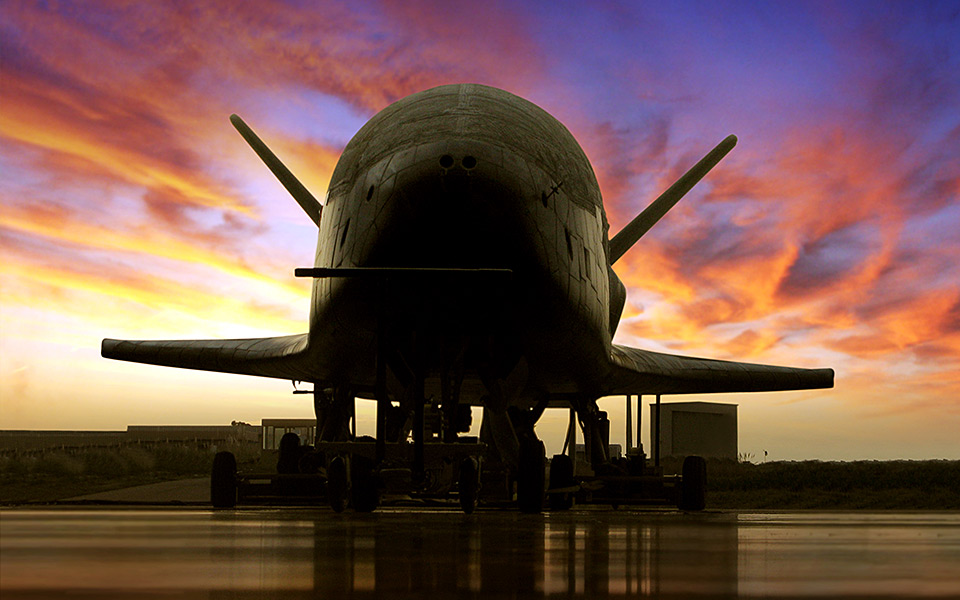US military's mysterious X-37B space plane sets new spaceflight record
The shadowy space plane has once again shattered its own mission-duration record.

The records keep falling for the U.S. Space Force's robotic X-37B space plane.
As of today (July 7), the X-37B has been in Earth orbit for 781 days, breaking its previous record of 780. The reusable vehicle designed and built by Boeing is currently flying on its sixth mission, known as Orbital Test Vehicle-6 or OTV-6, which launched on May 17, 2020.
Boeing Space announced the milestone today on Twitter, writing that the space plane "has set another endurance record — as it has on every mission since it first launched in 2010" while also thanking the U.S. Air Force, the U.S. Space Force, and other X-37B team members.
Related: The US Space Force's secretive X-37B space plane: 10 surprising facts
781 days and counting!The world's only reusable spaceplane, #X37B, has set another endurance record -- as it has on every mission since it first launched in 2010. Congratulations to the @USAirForce, @SpaceForceDOD and all our teammates who support X-37B! #SemperSupra pic.twitter.com/zzZAOG0Wa5July 7, 2022
The X-37B's current mission includes several classified payloads, but some of its on-board experiments have been made public. One such experiment deployed last year tested the U.S. Naval Research Laboratory's Photovoltaic Radio-frequency Antenna Module, or PRAM, a small pizza-box-sized device aimed at converting solar power into microwaves which can then be beamed back to Earth from orbit.
Other payloads launched on OTV-6 include the U.S. Air Force Academy-designed FalconSat-8 satellite that carries five experimental payloads itself, and two NASA experiments designed to test the effects of radiation on plant seeds and assess the effects of space on various materials.
The X-37B's overall design is similar to that of NASA's now-retired space shuttle, although the X-37B is much smaller: the military space plane measures in at 29 feet (8.8 meters) in length and 9.5 feet (2.9 m) tall, and boasts a wingspan slightly under 15 feet (4.6 m).
Get the Space.com Newsletter
Breaking space news, the latest updates on rocket launches, skywatching events and more!
At launch, the X-37B weighs 11,000 pounds (4,990 kilograms). The X-37B is designed to operate at a range of altitudes, anywhere from 150 to 500 miles (240 to 805 kilometers). The craft features fully automated de-orbit and landing capabilities and a fully electro-mechanical control system that eliminates the need for hydraulics. In a company fact sheet, Boeing calls the X-37B "one of the world's newest and most advanced re-entry spacecraft."
While there are rumors or theories that the X-37B might be a testbed for orbital weapons or could be used to capture adversary satellites, experts doubt these claims, arguing that the plane is far too small and not maneuverable enough to be used for these roles. The space plane's chief role likely involves testing new sensor systems and other technologies in orbit, as US military officials have long claimed.
While OTV-6 just set a new duration record for the X-37B program, 781 days is far from the overall spaceflight mark. Many Earth-observation satellites operate for 10 or more years, for example, and NASA's Voyager 1 and Voyager 2 spacecraft are still alive in interstellar space, nearly 45 years after lifting off.
Email Brett at BTingley@Space.com or follow Brett on Twitter at @bretttingley. Follow us on Twitter @Spacedotcom or on Facebook.
Join our Space Forums to keep talking space on the latest missions, night sky and more! And if you have a news tip, correction or comment, let us know at: community@space.com.

Brett is curious about emerging aerospace technologies, alternative launch concepts, military space developments and uncrewed aircraft systems. Brett's work has appeared on Scientific American, The War Zone, Popular Science, the History Channel, Science Discovery and more. Brett has English degrees from Clemson University and the University of North Carolina at Charlotte. In his free time, Brett enjoys skywatching throughout the dark skies of the Appalachian mountains.









